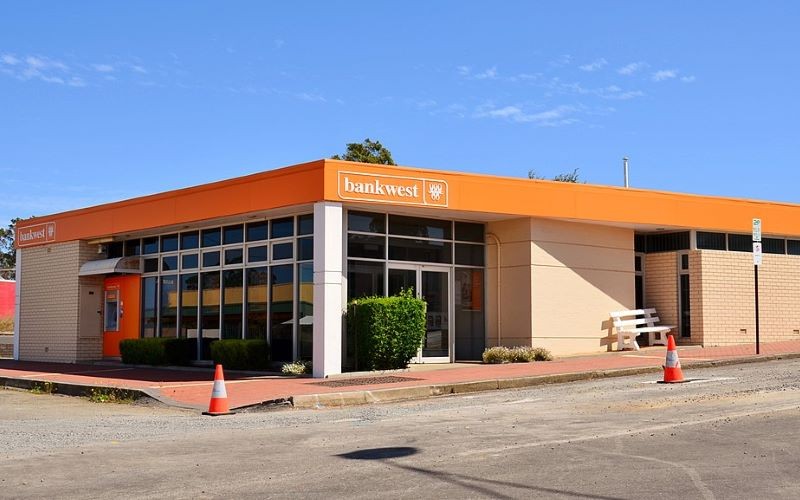There are many of Aussies who, despite having plenty of equity tied up in their home, lack the income needed to service another loan. But that dynamic has been disrupted.
Midkey – the brainchild of friends and former Macquarie and Credit Suisse bankers Richard Young and Scott Collison – offers ‘no monthly payment’ home loans.

Image: Midkey founders Richard Young (left) and Scott Collison (right), supplied
The product allows those with mounting home equity but sluggish income growth to defer payments on a new loan until the end of its life.
That means those taking out a Midkey loan don’t have to pay back the borrowed cash, plus interest and a ‘deferral fee’, until they sell their property.
The pair conceptualised the first-of-its-kind Australian offering after noticing “asset-rich” friends and family – as Mr Young calls them – struggling to access new credit.
“It’s primarily to help mid-life Australians solve their financial issues and achieve their financial outcomes,” Mr Collison told Savings.com.au.
“We do that in two main use cases; we’re either replacing part of a traditional interest loan and therefore reducing the regular payments on a traditional loan.
“Or the second way we help is; when people are looking to increase their debt but their income is being assessed as not enough to afford additional monthly payments.”
As a Midkey loan relies on the equity in a person’s home, it can bypass income assessments that typically restrain traditional lenders.
The product – which has ASIC’s tick of approval – was tentatively offered to the public for the first time earlier this year. And it’s already pricked the ears of mid-life homeowners.
Messrs Young and Collison started with $50 million of capital – a sum they’ve nearly completely deployed. They expect to turn to investors for more funds shortly.
“One of our challenges is that we’re relatively new and the product hadn't been seen before in Australia,” Mr Collison said.
“But I think the use cases are so relevant for this environment that there has been very strong demand.”
What is Midkey?: The nitty-gritty
While the property market continues to broadly climb, cash-flow-challenged homeowners often struggle to make the most of their increasing wealth. That’s where Midkey is designed to come in.
Under the home loan product, a person can borrow funds against the value of their home without paying the cash back regularly, even if they already have a mortgage.
But that doesn’t mean they don’t pay interest.
In fact, the offered interest rate is slightly higher than those provided by some traditional lenders – at 3.25% above the cash rate (making it 7.35% at the time of writing).
Midkey will loan you up to 35% of your home’s value if you don’t have a mortgage, or 30% if you do. You’ll then pay back the borrowed funds, plus interest, when you sell the house.
On top of that, you’ll also provide Midkey with a portion of any capital gain you make on the sale of your house. It’s called a ‘deferral fee’ and it's directly related to how much you borrow and the ‘agreed initial value’ of your home.
It’s also worth noting that borrowers aren’t locked in to a Midkey loan. They can repay in part or in full whenever they wish (subject to a minimum $50,000 repayment). Though, doing so will demand a new property valuation.
For example…
It's a relatively simple, albeit likely foreign, concept, as per an example provided by Mr Young.
Let’s assume your home is independently valued at $1.052 million, you owe $500,000 on your traditional mortgage, and you wish to take out a $200,000 Midkey loan.
“We take a 5% discount to that $1.052 million value, so we have what is then called an ‘agreed initial value’, which in this instance is a million dollars,” Mr Young said.
Simple enough. Now, that $200,000 Midkey loan is equivalent to 20% of the agreed value of your home.
And let’s also assume you're faced with a 7% interest rate on that loan over the next five years. Then, in 2028, you decide to sell.
Flash forward and the gavel has fallen. Congratulations, you’ve sold your house for $1.2 million!
You pay back the $200,000, plus interest (which comes to $14,000 a year, or $70,000 in total). You also provide the lender with a deferral fee of approximately $40,000 – around 20% of your capital gain, based on the agreed initial value.
If your house doesn’t sell for more than the agreed valuation, you don’t need to pay the deferral fee.
You’ll also potentially face a fee to establish the loan (up to 1%) and shirt the cost of the independent valuation needed to kick start it.
With any luck, after all that, it’ll have been worth it to have the extra cash in your back pocket when you needed it.
Use cases: Property investment, bridging loans, spending money
There are plenty of use cases for Midkey loans, thanks in part to some of its more innovative features.
Of course, homeowners looking to renovate, upsize, snap up an investment property, or simply reduce their regular payments make up the lender’s target market.
It even has its first ‘Midkey baby’ on the horizon after a couple turned to the product to help finance their growing family. “We were overwhelmed with that positive use case,” Mr Young said.
Looking beyond that target market, however, it appears Midkey can also provide short-term finance. For instance, those on the hunt for bridging finance could turn to the lender.
“The proposition we put to borrowers is, we provide you an incredible amount of flexibility in terms of the time that you choose to repay,” he said.
Not to mention, It can act as ‘the bank of Mum and Dad’ for those who lack enough capital to live out their investing dreams.
“We're seeing a lot of demand from people who want to fund a new business,” Mr Collison said.
“Also, people who have other investment opportunities that they might want to make in another asset class, or something else that comes on the horizon that they view as being a good opportunity.”
And, of course, a person might simply wish for a bit more cash in their back pocket.
“They might want to buy a boat or caravan or something along that discretionary line,” Mr Collison concluded.
No reverse mortgages here
Those in the know might wonder how this product differs from a reverse mortgage, a tool typically offered to retirees in need of cash flow.
The answer is greatly.
Not only is Midkey available to people of all ages, it also charges simple interest. That means a borrower isn’t charged interest on their interest.
It might sound like a small thing but it can make a big difference. Just take a look at the difference between simple and compound interest on a $200,000 loan over 20 years – assuming a constant 7.35% interest rate – depicted on the chart below.
Beyond borrowers: ‘Knock on effect’ to the Aussie economy
There’s also the potential of what Mr Young calls the “knock on effect” that equity release products like Midkey could offer the economy.
“The outgoing Reserve Bank Governor [Dr Philip Lowe] is talking about the need for productivity growth in the economy,” he said.
“There's all of this wealth tied up in people's properties that hasn't been able to be accessed.”
Thus, enough people taking out loans like Midkey could feasibly stimulate the economy.
“Particularly, where those people are investing in businesses, renovating their houses, or buying houses. It just helps the economy get additional support,” Mr Young continued.
The fine print
While we won’t go into all the terms and conditions involved with Midkey – or make any assumptions on a reader’s financial position – there are a few ‘Ts & Cs’ worthy of mention.
-
The first being that Midkey is only available for owners of houses or townhouses in certain cities.
“We think that there will be demand nationally,” Mr Collison said.
“But at the moment, we're only lending in Sydney, Brisbane, and Adelaide.
“We're just expanding and doing our first loan in Western Australia and we will soon be lending in Tasmania.”
However, Victoria remains out of reach for now due to the state’s stamp duty legislation.
-
Further, if a person already holds a mortgage before applying for a Midkey loan, that mortgage must be a principal plus interest loan.
-
They also need to hold at least 20% usable equity in their home. That is, their home must be worth at least a fifth more than the outstanding balance of their home loan.
-
Finally, like a traditional loan, a borrower can default on their Midkey loan.
Some potential triggers of a default include increasing the size of the first home loan without approval or not maintaining adequate home insurance.
On top of that, if the value of a borrower’s home falls below the combined value of their traditional home loan and the Midkey home loan, Midkey will ask they pay to reduce the balance of their loans or risk defaulting.
Advertisement
Buying a home or looking to refinance? The table below features home loans with some of the lowest interest rates on the market for owner occupiers.
| Lender | Home Loan | Interest Rate | Comparison Rate* | Monthly Repayment | Repayment type | Rate Type | Offset | Redraw | Ongoing Fees | Upfront Fees | Max LVR | Lump Sum Repayment | Extra Repayments | Split Loan Option | Tags | Features | Link | Compare | Promoted Product | Disclosure |
|---|---|---|---|---|---|---|---|---|---|---|---|---|---|---|---|---|---|---|---|---|
5.54% p.a. | 5.58% p.a. | $2,852 | Principal & Interest | Variable | $0 | $530 | 90% |
| Promoted | Disclosure | ||||||||||
5.49% p.a. | 5.40% p.a. | $2,836 | Principal & Interest | Variable | $0 | $0 | 80% |
| Promoted | Disclosure | ||||||||||
5.64% p.a. | 5.89% p.a. | $2,883 | Principal & Interest | Variable | $250 | $250 | 60% |
| Promoted | Disclosure | ||||||||||
5.64% p.a. | 5.89% p.a. | $2,883 | Principal & Interest | Variable | $248 | $350 | 60% |
| Disclosure |
Image by R ARCHITECTURE on Unsplash

Ready, Set, Buy!
Learn everything you need to know about buying property – from choosing the right property and home loan, to the purchasing process, tips to save money and more!
With bonus Q&A sheet and Crossword!







 Harry O'Sullivan
Harry O'Sullivan
 Bea Garcia
Bea Garcia
 Denise Raward
Denise Raward
 Jacob Cocciolone
Jacob Cocciolone
 William Jolly
William Jolly

